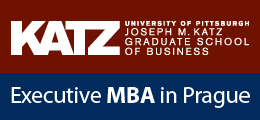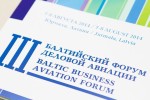Rotorcraft Industry In South America On The Hunt For Knowledge
Recently, AugustWestland Brazilian subsidiary has announced its plans to build a massive helicopter maintenance facility near Sao Paulo. The news were positively greeted by both operators and government bodies since the need for appropriate MRO support has long been subject to growing concern in the region. However, prior to popping the champagne, we must first acknowledge that as of today, the region has no qualified manpower to work in such centres.
Latin America suffers from one of the widest gaps between the poor and the rich in the word. Therefore, it should come to no surprise that the skill gap in the region is a serious issue. In fact, as many as five countries in the continent (Peru, Argentina, Brazil, Panama and Colombia) are amongst the world’s top 10 in terms of employers who have declared having difficulties filling in the positions where skills matter, with engineers and technicians ranking second and third in the list of most wanted professionals, according to Manpower.
 It is no secret that with the increasing attention from OEMs and MROs, the region is in pressing need of qualified aircraft engineers as well as technicians. According to Anatolij Legenzov, the CEO of Helisota, prolonged waiting or extended discussions on how to solve the issue is not an answer. “The solution must come quick as over a third of the existing labour force in the field is aged 50 years or more and will retire in the nearest future. And with 45 % of operators forecasting to increase their use of helicopters this year alone, the region’s workforce will inevitably fail to keep up.”
It is no secret that with the increasing attention from OEMs and MROs, the region is in pressing need of qualified aircraft engineers as well as technicians. According to Anatolij Legenzov, the CEO of Helisota, prolonged waiting or extended discussions on how to solve the issue is not an answer. “The solution must come quick as over a third of the existing labour force in the field is aged 50 years or more and will retire in the nearest future. And with 45 % of operators forecasting to increase their use of helicopters this year alone, the region’s workforce will inevitably fail to keep up.”
In total, it is expected that Latin American countries will welcome from 2400 to 2700 new machines by 2018, says Honeywell. However, as concerns MRO training, initiatives in the region are few and far between. Alongside the training centre in the aforementioned AugustaWestland’s facility, Russian Helicopters are also set to establish a base in the South. That should come to no surprise, since nowadays 1 in 5 of all helicopters purchased by Latin operators are Russian-built. It once again leads to the question: who is going to maintain the growing fleet?
While both bases shall include training centres, given the demand, ‘busy’ would be nowhere near the accurate description of schedules at both facilities. In the meantime, some operators may decide to look for more time and cost-effective solutions, such as deployed teams of instructors from outside the region, who can provide certified training for all of the operator’s employees in the form of individual training courses.
As stated by the executive, “there is no doubt that the region lacks qualified and certified workforce. Even with such great initiatives as the ones implemented by the aforementioned companies, maintenance works could be slowed down due to inexperienced staff.” After all, in most countries less than 25% of all graduates receive science or engineering degrees with only a fraction of them opting for a career in aviation, let alone helicopter maintenance. That is why a third of South American employers use foreign talent to fill in the knowledge gap, indicates the Borderless Workforce study.
“In other words, even in the presence of adequate maintenance facilities, we still don’t have the appropriate workforce to use them. Despite the training centres, preposterous growth of the sector is nowhere near to being handled properly. And with the employees retiring, the region is in pressing need of trusted partners who could extend a helping hand in training the engineers and rotorcraft maintenance workers of tomorrow,” concludes Anatolij Legenzov, the CEO at Helisota.
Source: Helisota
Publishing or copying the content of AVIATION Times without a written electronic permission is strictly forbidden. If you have any information, tips, videos, photos or your press releases for us contact us at news@aviation-times.aero.
AVIATION TIMES © Copyright 2012 - 2025







